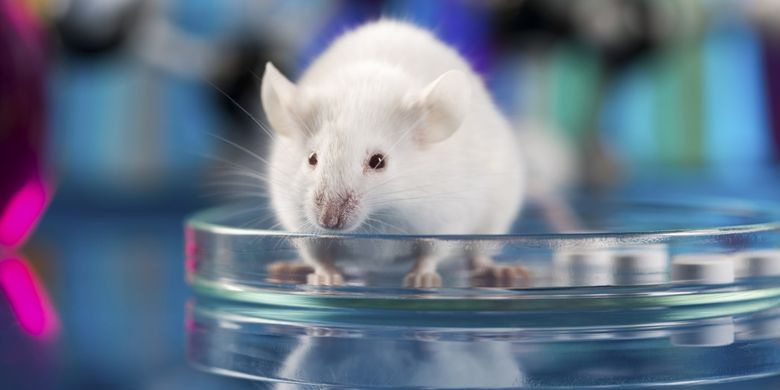
On Habré we publish a series of start-up day digests, which includes the most interesting young IT companies from around the world. In the process of selecting the material one has to come across various amazing ideas, some of which are truly amazing.
At all times there were eccentric scientists. Inventors, chemists, physicists, physiologists, assorted naturalists used various tricks, seeking to justify the correctness of their hypotheses. Scientists in search of truth went to the desperate experiments. Today it seems strange how such experiments could have occurred to people, but the progress achieved in medicine, psychology or physics became possible largely due to bold and even insane people. Further you learn more about some eccentric scientific searches.
The oldest food in the world
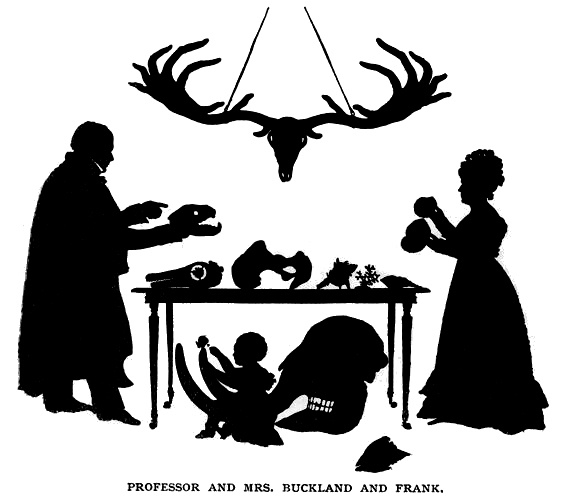
British geologist and paleontologist William Buckland entered the history of science by describing and naming the first open species of dinosaurs - the megalosaur. But he was remembered not only by this, but also by his unusual taste preferences. Buckland not only tried a huge amount of all kinds of living creatures, but even ate the mummified heart of French King Louis XIV. Perhaps it was the oldest human food in the world, and perhaps a scientific myth. In any case, there is evidence that members of several geological expeditions tried mammoth meat ...
How old is a person able to eat without risking fatal poisoning? Science has long been interested in the answer to this question.

In 1900, one of the longest-running scientific experiments in history began on the Russian Peninsula Taimyr. For 117 years, under a layer of permafrost at a depth of 1.3 meters, canned food, bread, sausage, buckwheat and other products, buried by the head of the Russian polar expedition, Eduard Tolle, lie.
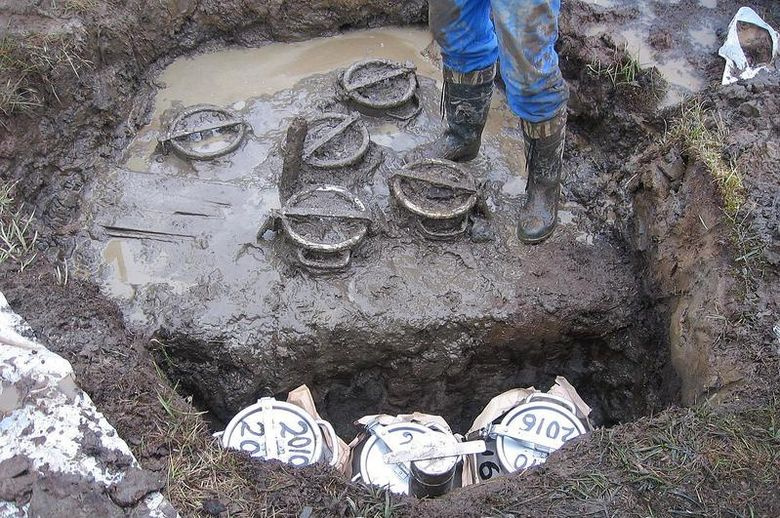
Warehouse Edward Toll. On the left, you can see the lid of the 110-year-old soup box
A source
In 1973, a grocery store was discovered and the first samples were delivered to the "mainland" for research. In 1974, 1980, 2004, 2010 and 2016, expeditions were repeated with the expectation to finish the experiment in 2050.

A source
Today, the research institute of the Rosrezerv storage problems is studying the food of a century ago. They conduct microbiological and physico-chemical analyzes to determine the composition, energy value, the presence of impurities, toxicity, acidity. They assess the state of the packaging, measure the level of tin in cans, and then even eat these products and consider them to be completely edible.
Scientists not only investigate old stocks, but also make new ones, digging in flour, cereals, groceries, and alcohol — more than 80 kinds of products.

World Seed Storage on Svalbard
The project is designed to prepare for a more active development of the Arctic region, and also checks the possibility of storing products in the context of global disasters and conflicts. A similar direction is now being developed in Norway, where the “Doomsday repository” is located. On the island of Svalbard, at a depth of 120 meters, samples of seeds of major agricultural crops of the world are placed in the cold.
And completing the food subtopics, we recall Frederick Helzel , who investigated the effects of starvation, as well as the work of the digestive system in an eerie way - by eating various inedible items. He ate sawdust, cork, feathers, asbestos, silk, surgical cotton, gravel - all in order to measure how quickly they passed through his intestines.
Such a "diet" led to the fact that Helzel looked exhausted, but he lived a surprisingly long life. However, official science ignored him until his death - Heltzel never became a professor, but received the title of “assistant professor of physiology” at the University of Chicago.
Organic energy

You think this is a closet, and this is a battery
Wilhelm Reich , one of the most successful students of Sigmund Freud, developed the bioenergy theory of the orgone in the 1930s. According to Reich's theory, “orgonal energy” penetrates everywhere and fills everything around, does not relate to the energy of static electricity, creates electromagnetic radiation in the blue color spectrum. He believed that certain forms of the disease are the result of blocking this energy in the body.
In order to prove his theory, Reich built an “orgon battery”: a box whose walls are made of alternating layers of metal and dielectric. The patient was placed in an “org accumulator”, as a result of which the “org energy” was to influence his health.
In 1954, the Food and Drug Administration of the United States denied him a license to manufacture "organic batteries" and ordered him to stop all experiments. After numerous violations and clashes with the authorities, the psychologist was sentenced to imprisonment.
Until his death, the purposeful Reich was never able to prove the effectiveness of the device he created, but his inventions did not sink into oblivion. Raych's methods use the present-day American College of Orgonomy. They even carry out work with the "more advanced" type of "orgone battery", created in the form of a pyramid .
In all things that did not concern bioenergy, Reich was rational and progressive, advocating the abolition of repressive morality and the demand for sex education.
Cyborg man
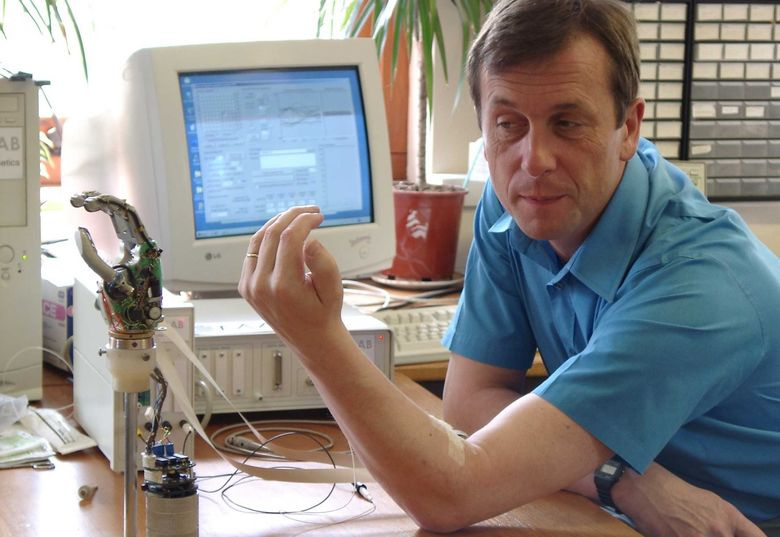
Kevin Warwick is a professor in technical cybernetics. He is one of the world's most famous cyborgs, on his own body engaged in research in the field of robotics and biomedical engineering. In 1998, Warwick implanted an RFID tag in his hand to control lighting, heaters and computers.
Then the professor implanted himself with a few more electrodes and chips for remote control of a robotic arm. The implant was connected with hundreds of electrodes to the tissue of the median nerve of the arm. The professor sent neural impulses to his fingers, the implant transformed them into electrical signals and transmitted to the computer, and the mechanical arm moved depending on the type of signals, repeating the movements of Warwick.
His wife, Irena, yielding to the entreaties of her husband, also implanted in her body. In the future, the couple plans to set up a deeper interaction between implants in each other, up to and including “experiments in the field of electronic communication between the nervous systems of two people”.
The professor himself about his experiences expressed succinctly: "I do not want to be a simple person." And he adds that only those who will be able to improve their natural abilities will survive in competition with AI.
Research through your own body
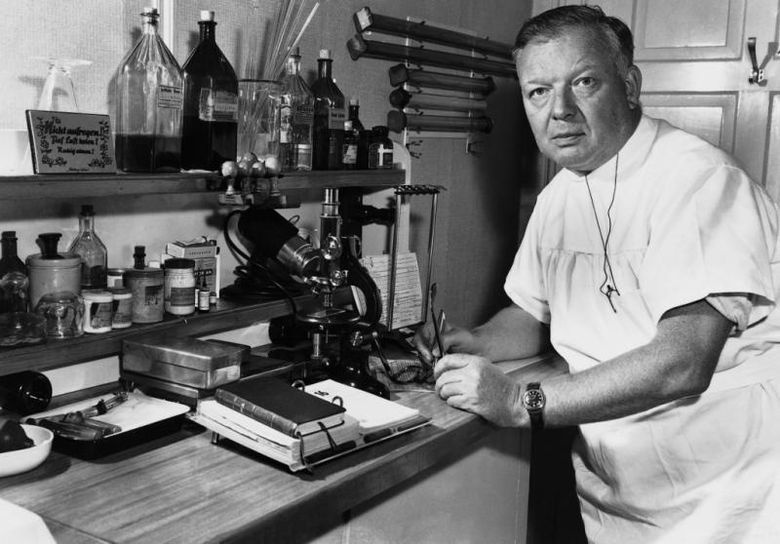
In 1929, the German doctor Werner Theodor Otto Forsman conducted a medical experiment on himself. In order to demonstrate the safety of the catheterization method developed by him, he demonstrated the anatomical and functional features of the human heart by inserting a catheter into it through a vein.
Using only the help of a nurse, Forsman inserted a tube of 1 mm in diameter 60 cm along the vein of his left hand and hit the right atrium - this was the first such experiment performed on a living person. He conducted this study several times, adding a contrast agent to the blood, creating detailed X-rays of the heart.
In 1952, Forsman was awarded the Nobel Prize in Physiology and Medicine "for his discoveries related to cardiac catheterization and the study of pathological changes in the circulatory system."
Forsman was far from being the only scientist who had ventured into an experiment dangerous for his own life. Throughout his career, the physiologist Joseph Barcroft conducted experiments in which he led himself to the brink of madness and death. He called them "border excursions."
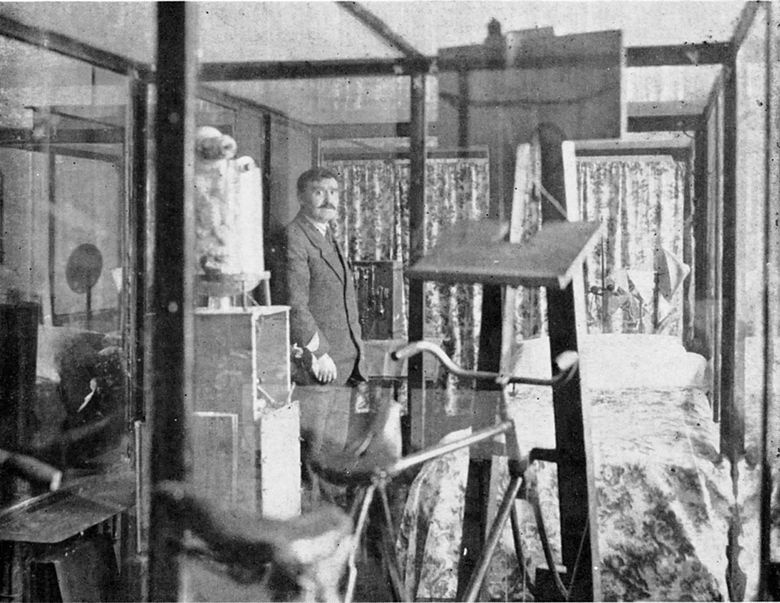
The photo is not Barcroft, but his assistant, but the picture is interesting to others. We see a glass chamber in which Barcroft was exposed to low concentrations of oxygen for almost a week. You can see the bed, bicycle ergometer and other equipment
A source
During the First World War, he conducted experiments with asphyxiating gases, exposing himself to the effects of hydrogen cyanide. Ten years later, he spent seven days in a small glass chamber to calculate the minimum amount of oxygen necessary for human survival. During this time, his whole body turned blue. Another time, he investigated the effects of cold — he closed in a chamber with such a low temperature that he fainted.
Investigating the respiratory functions of the blood, and studying the properties of oxygen at high altitude, conquered several alpine peaks.
Barcroft lived for 74 years, became the winner of many awards, and in 1936 he was nominated for the Nobel Prize in Physiology and Medicine.
Faster than bullet
In 1947, the man first broke the sound barrier, but no one knew what would happen if the pilot had to get out of the plane at such speeds. It was assumed that the pilot would die of overload instantly.
John Paul Stepp voluntarily became a “dummy” for research into extreme overloads. Stepp was an experienced Air Force officer and a military doctor who studied the effects of rapid acceleration and deceleration on a human body in order to find ways to improve the safety of aircraft.
Instead of smart sensors and laboratory mice, Stepp used his body to calculate ultimate loads. In numerous experiments, the pilot found out that not only the degree of overload is dangerous, but also its direction relative to the human body. With accelerations directed towards the head, a magnitude of only 6g is sufficient to cause a short-term loss of consciousness.

A source
In 1954, Stepp accelerated on a platform on rails and braked sharply, experiencing an overload in 48g. The platform reached a speed above 1000 km / h, and completely stopped in just 1.4 seconds. Stepp tested the same as the driver of a car, who had driven into a concrete wall at a speed of 100 km / hour.
He survived, but with great difficulty: he lost his sight for several days, received fractures of his limbs and ribs, retinal detachment and other injuries. However, the difficult experience did not put an end to his career. He continued research work. Once, at a height of 13,700 meters, Stepp decided to open the cabin of a jet plane. The tester found out that if you inhale pure oxygen 30 minutes before take-off, you can withstand a short time at high altitude.
Thanks to his selfless action in 1966 in the United States adopted a law on mandatory car seat belts.
By the way, in the end he lived to 89 years.
To magic through the neural interface
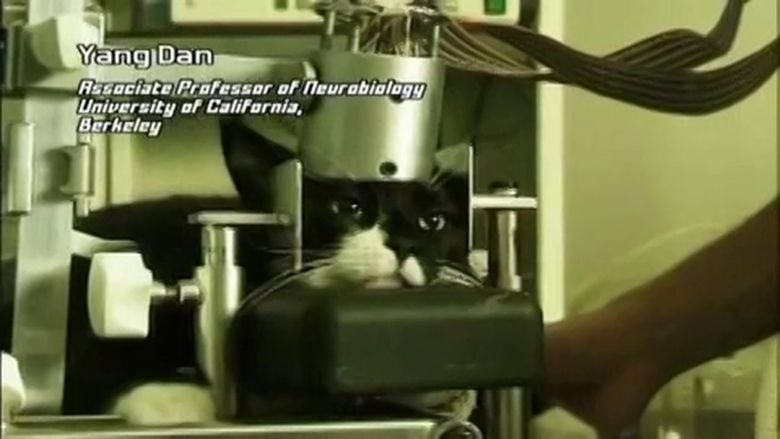
The cat was not injured! With the cat all is well! A source
In 1999, researchers led by Dr. Jan Dan, an assistant professor of neuroscience at the University of California at Berkeley, introduced a painkiller and paralyzer to the cat, and then securely fixed it. They were not going to torment the unfortunate animal. It was one of the first attempts to penetrate into the brain of another being and see the world through his eyes.
Researchers inserted electrodes into the cat's brain processing center. The electrodes measured the electrical activity of brain cells and transmitted information to a computer, which deciphered it and transformed it into visual images. The cat showed cards with the image of trees and the same images (slightly blurred) appeared on the computer screen.
Scientists have suggested that image quality can be improved in future experiments by measuring the activity of a larger number of brain cells. These experiments became the basis for the development of the neurointerfaces industry, in which objects can be controlled by the “power of thought”.
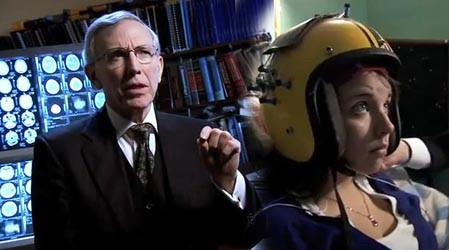
Photo source
Michael Persinger , a psychologist at Lavrentiev University in Canada, in his brain experiments went much further than the recognition of visual signals. The researcher hypothesized that activity in the temporal lobe of the brain causes agitation in the limbic system, a provoking condition that underlies religious experiences.
Persinger designed a helmet that acts on the temporal lobes by an electromagnetic field. In the course of several experiments, it was found out that the effect on the temporal lobes of the brain can cause the subjects to feel the presence of otherworldly, religious insight and even the experience of leaving the body. More than 80% of the subjects reported that a certain magical power had appeared in the room next to them.
Persinger argues that almost all the unexplained phenomena in our lives are due to the effects of electromagnetism. He came to the conclusion that even the occurrence of a UFO is caused by fluctuations in the electromagnetic field of the planet.
However, an experiment conducted by Swedish scientists using the double-blind testing method on 46 theological students and 43 psychology students, refuted Persinger's conclusions. It turned out that the matter is simply in suggestibility, religiosity and other personal qualities of the subjects. Persinger disagreed with these conclusions and accused the Swedes of technical errors in making copies of his helmet. In general, it’s too early to put an end to this dispute.
Thomas Midgley destroys the world

Is it possible for one person to cause irreparable harm to the planet? Yes, if this man Thomas Midgley is an American chemist and mechanical engineer, the author of more than 100 patents whose inventions had a devastating impact on the Earth’s ecology.
While working for General Motors, Thomas Midgley found that gasoline with a special lead-based additive reduces knock on internal combustion engines. At the same time, the release of lead into the atmosphere was dangerous due to its toxicity. Workers involved in the production of supplements, suffered from health problems, even deaths due to poisoning.
After the death of more than 10 people, the press made a fuss. The company held a press conference at which Midgley washed his hands in a lead mixture and breathed in a minute the smoke of fumes to show that his invention was safe. He managed to make an impression on journalists, and for decades, until a total ban in 1973, cars continued to poison the atmosphere with lead impurities.
Midzhley himself was forced to go on a long vacation to recover from lead poisoning, while he concealed this fact from the press and claimed that the substance he had invented was completely safe.
Another interesting discovery of Midgli is chlorofluorocarbons (freons). He created them to make refrigerators safe, because prior to the invention of Midzhli, toxic and explosive substances were used in the appliances. To demonstrate that freon does not burn and does not harm health, Midgli breathed dichlorofluoromethane at the presentation. Only 30 years after the death of the inventor, it was found that freons destroy the ozone layer.
At the age of 51, Thomas became sick with polio, leading to disability. His inquisitive mind did not want to put up with the limitations imposed by a weak body: to be able to easily get out of bed, he invented a complex system of ropes and blocks. Bitter irony, but after four years he died, entangled in the ropes of this mechanism until complete suffocation.
Brain for learning AI
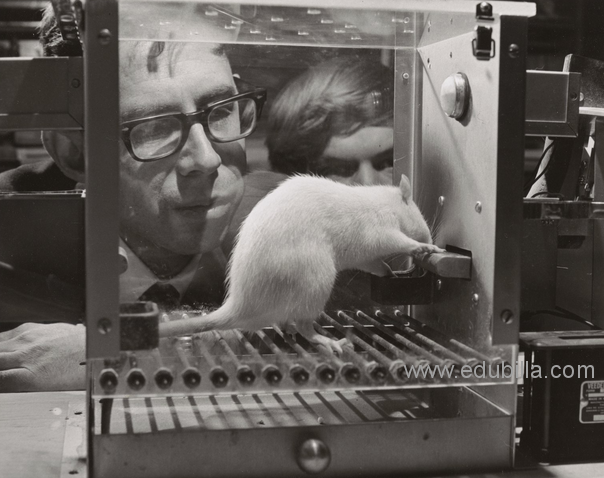
Scientists love mice and rats. Experiments are conducted on mice — such a number of experiments that you cannot even imagine. Scientists have already found out that mice sympathize with their fellow alcoholics and drug addicts, fall in love with each other, can live with transparent skin and ... well, the history of relationships with mice can be a topic for a separate study. And on mice it is very interesting to study the possibilities of the brain.
There is an EyeWire project in which scientists from MIT have killed, unfortunately, a laboratory mouse named Harold. His brain was cut in micron layers, shoved sections into a scanning electron microscope and received a large set of scanned images. Scientists have made an online game in which users were given slices, and were given the task to color the slices according to certain rules. Next, the colored sections were transferred to the neural network, a convolution was made there, the neural network was trained. The result is a grid, which itself, using slices, restores the three-dimensional structure of synoptic links.
But before the brain of the mouse began to be used for training the neural network, there was one unusual experiment. He was led by Frank Rosenblatt - a famous American scientist in the field of psychology, neurophysiology and artificial intelligence. Perceptron is the first artificial neural network embodied in practice by Frank Rosenblatt. The scientist decided that there is no time to wait until the electronic machines are fast enough to simulate the work of the neural network on the Vonneumann architecture. He began to make neural networks of "sticks and scotch" - a sort of array of electronic neurons and heaps of wires. These were small neural networks (up to several dozen neurons), but they were already used in solving some practical problems. Rosenblat was even able to sell the devices used in the analysis of some arrays to several banks.
1966 . , , . , … , , .
, , . , , . , , , .
«»: ,

1942 . , . , , .
«Habbakuk» «» : «… , , , ».
, 5- . , . - .

.
( ) , — , , , 18–45% 82% . 4 , , . .
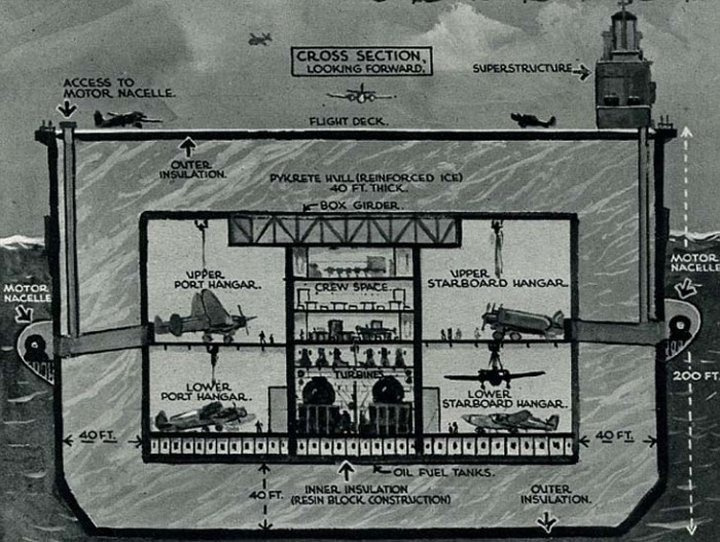
A source
, 610 , 90 200 . — 2 000 000 ( Knock Nevis — 657 018 ). — 1% , .

. A source
500 . 12 . 4000 . 26 , , .
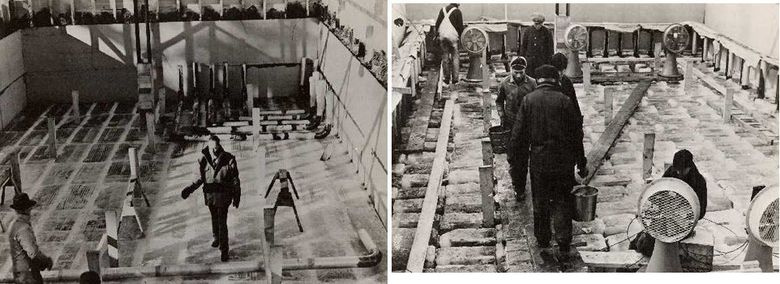
, 18 9 1000 , () 1943 . . Source of
300 000 , 25 000 , 35 000 10 000 , . 8000 1944 , — .
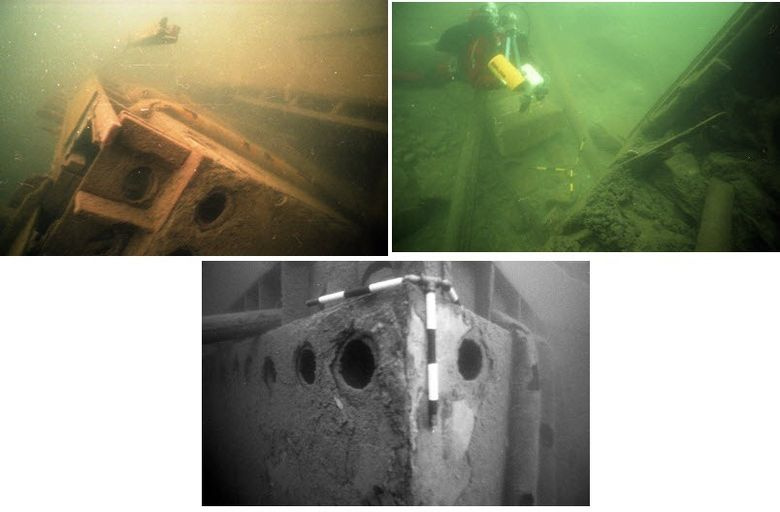
18- , . . Source of
?
, , . , , Hi-Tech.Mail.Ru, 14 iPhone 6s - .
, : , , .